Love Geology? 15 Ways to Explore Petrified Forest
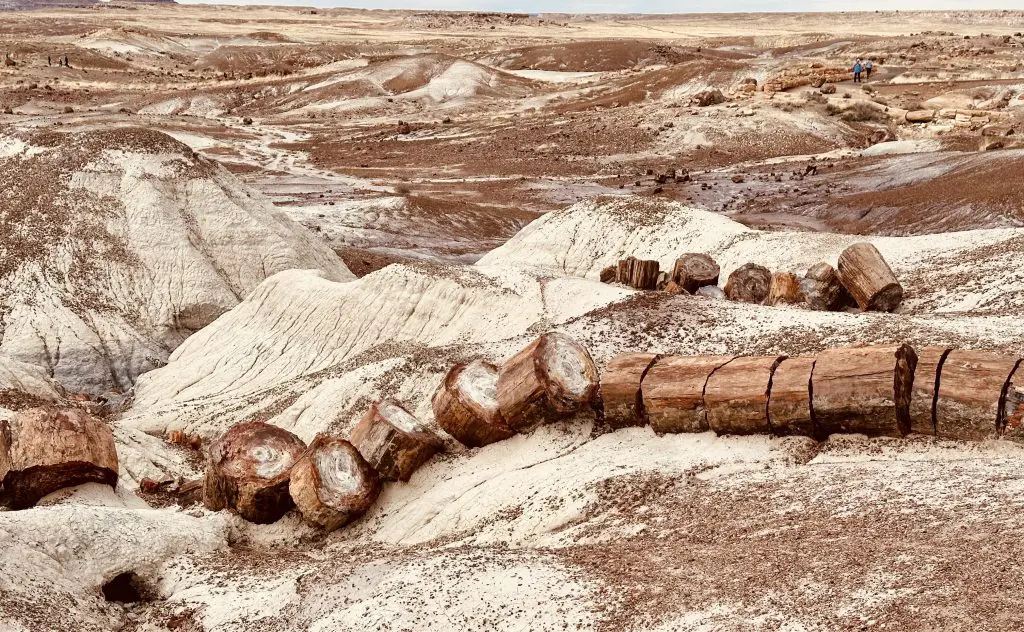
Crystallized petrified wood, painted deserts, and colorful geological formations make exploring Petrified Forest an amazing national park.
Who would have thought 200 million years after the dawn of dinosaurs we could see, and touch, trees petrified to stone?
These logs showcase nature’s palette of red, yellow, green, black, and white swirled together like an abstract painting.
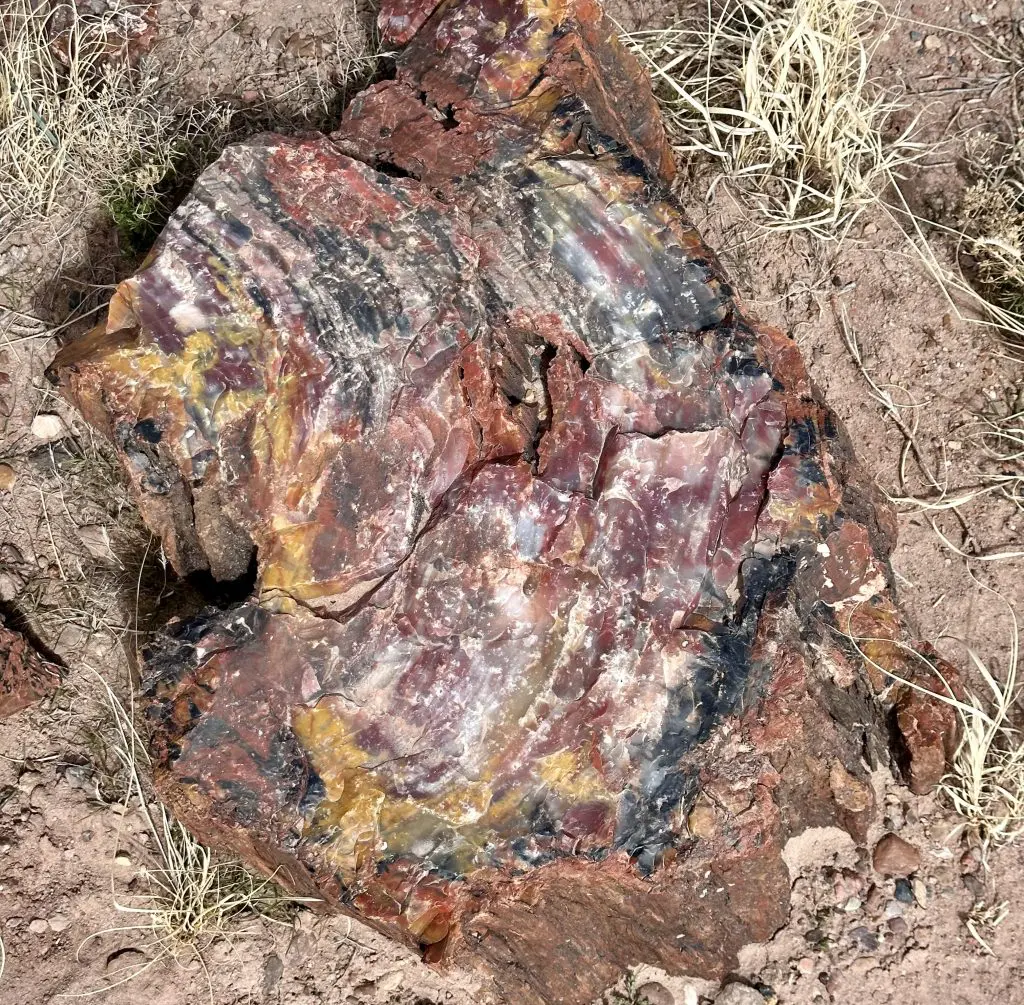
Petrified Forest, in Arizona, became the 30th national park in 1962. It became a popular stop along Route 66, long before the Sixties, and is near the historical town of Holbrook. A north entrance was eventually created off Interstate 40.
There are 15 ways to explore Petrified Forest in one day. Starting on the southern entrance off U.S. Route 180, our first stop, heading north, was the Rainbow Forest Museum and Visitor Center.
1. Rainbow Forest Museum and Visitor Center
Explore Rainbow Forest Museum and Visitor Center to learn about prehistoric skeletons, fossils, and petrified wood. Understand how soil, water, and the weather continually create, change, and evolve our natural environment.
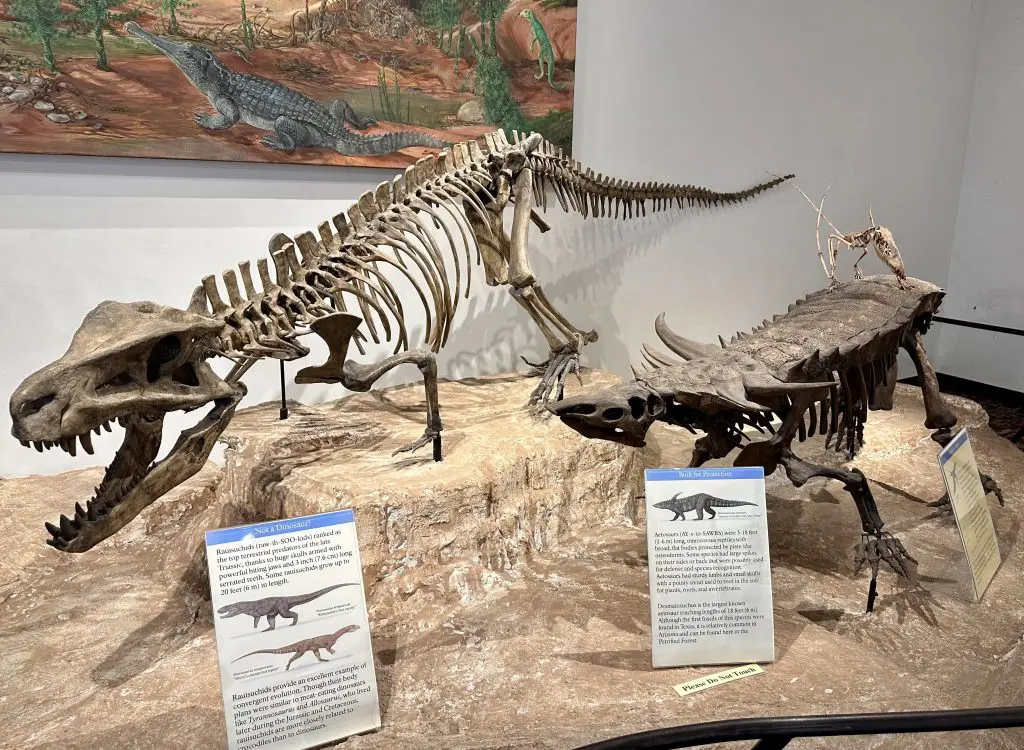
Learn about life common to the area from the late Triassic Period, like those of the skeletons (above) of a Rauisuchid and an Aetosaur, which were closer to crocodiles than dinosaurs.
2. Walk along the Giant Logs Trail
Behind the museum is the 0.4-mile Giant Logs Trail, which contains some of the largest and most colorful petrified logs in the park. Trails – Petrified Forest National Park (U.S. National Park Service)
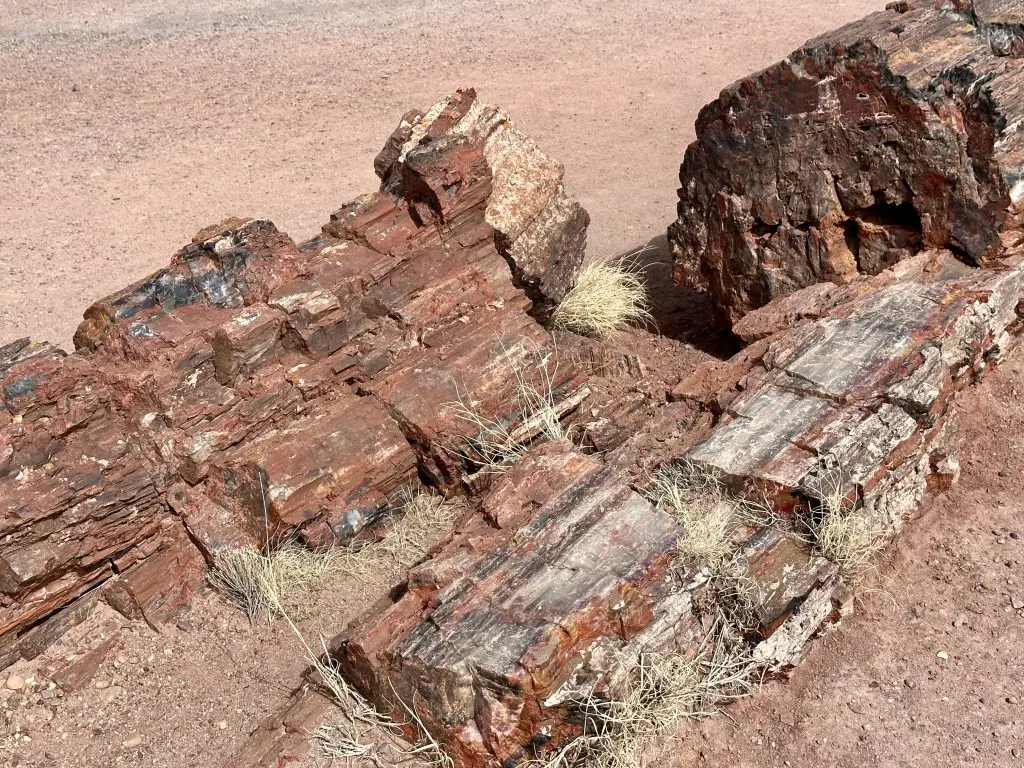
Most of the trails in the park are easy and under a mile. Many trails are paved for accessibility.
3. Hike to Agate House on Long Logs Trail
Across the street from the museum is the Long Logs Trail and the reconstructed Agate House. The Puebloan people may have lived in the structure, constructed of petrified wood, around 1050-1300. After the remains were excavated, it was reconstructed in the 1930s. Agate House – Petrified Forest National Park (U.S. National Park Service)
The two-mile roundtrip hike to Agate House is accessible from the Rainbow Forest Museum parking lot.
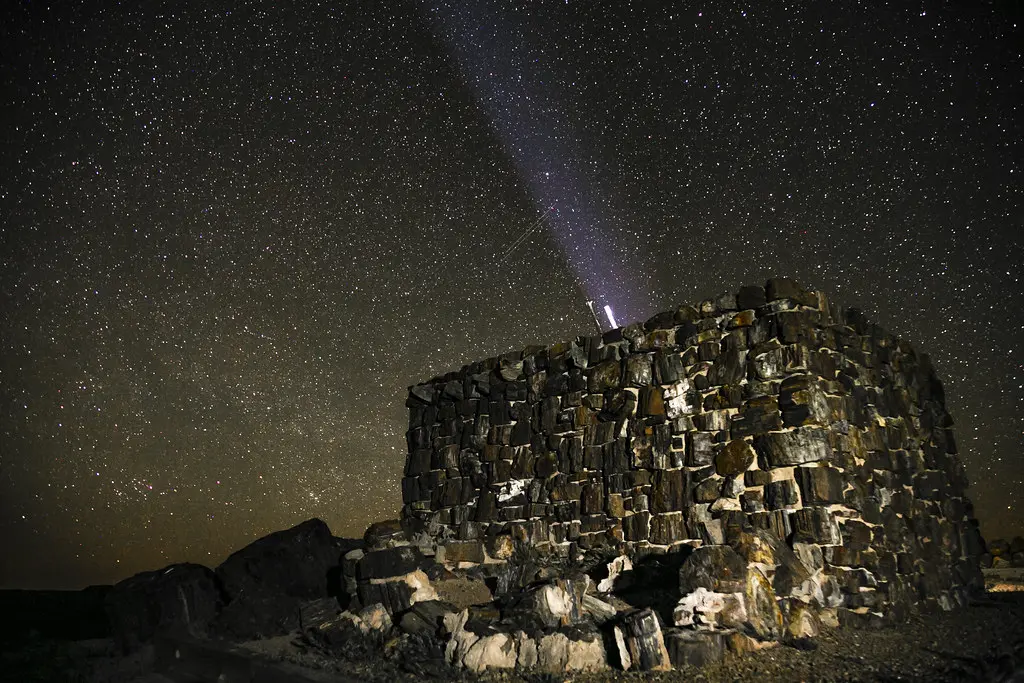
Since the park gates close at 5 p.m., it’s rare to get a glimpse of the dark skies unless you are backpacking. The night picture above, taken by a National Park Service photographer, shows the astrological beauty of being an International Dark Sky Park.
Overnight backpackers can obtain permission to enjoy the splendor of these skies at night by applying for a free permit. Backpacking – Petrified Forest National Park (U.S. National Park Service)
4. Explore petrified logs of Crystal Forest
Heading north, you can explore the beautiful crystals in the petrified logs on the paved 0.75-mile loop around Crystal Forest. Examine these crystallized logs up close while admiring the impressive badlands in the backdrop.
Over 200 million years ago, river streams carried the logs to their current location where they were buried quickly and deep enough to starve off oxygen and slow the decaying process, according to the park website. Then, silica, from volcanic ash, absorbed into the wood over hundreds and thousands of years, replacing the organic matter with crystals. Petrified Wood – Petrified Forest National Park (U.S. National Park Service
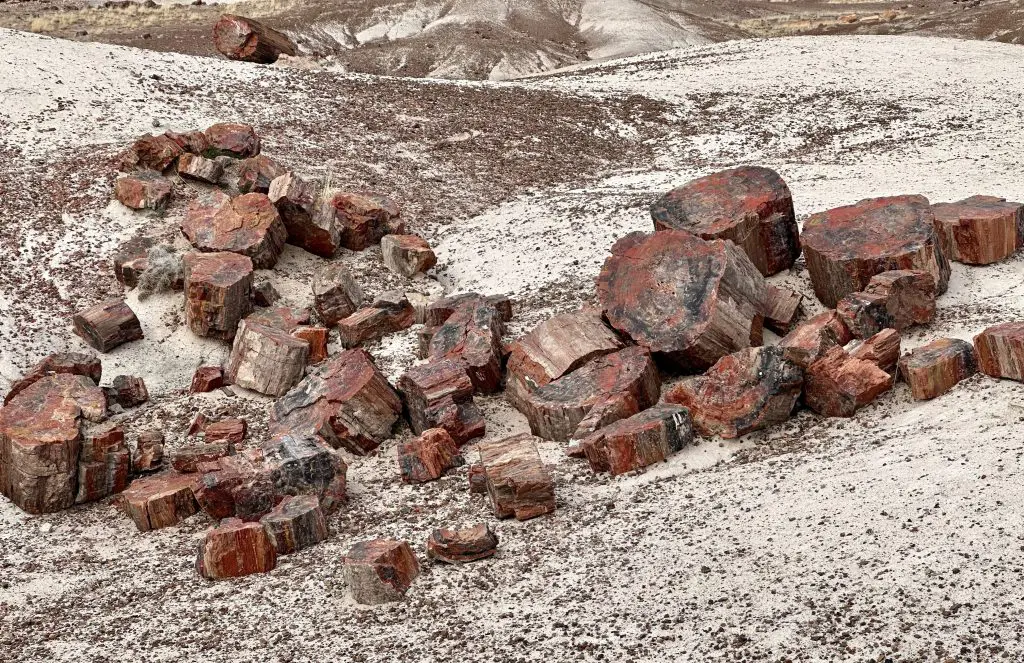
Many of the petrified logs are made up of almost entirely quartz. They have beautifully colored crystals from impurities in the wood (mostly iron, carbon, and manganese). Petrified Wood – Petrified Forest National Park (U.S. National Park Service)
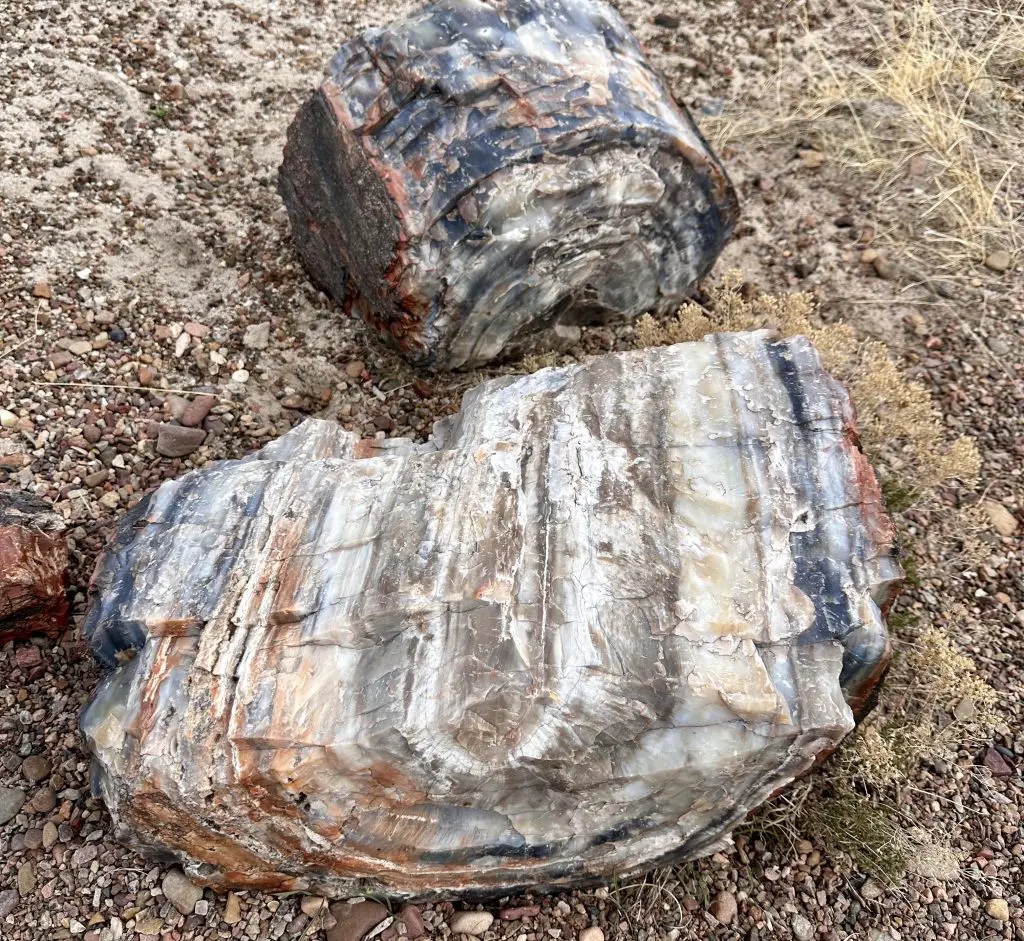
And who cut these logs? Mother Nature, of course. The wood, still buried, fractured like glass with the gradual uplifting of the Colorado Plateau around 60 million years ago. Petrified Wood – Petrified Forest National Park (U.S. National Park Service)
These logs, weighing about 160-200 pounds per cubic feet, are hard, about 7.8 out of 10 on the Mohs scale of mineral hardness, but they are brittle and crack under stress. Frequently Asked Questions – Petrified Forest National Park (U.S. National Park Service)
5. Enjoy the panoramic views of Jasper Forest
Much of the drive through the park, especially the areas around Jasper Forest, Blue Mesa, and the Teepees, have beautifully colored layers in the geological formations. Over 200 million years ago, river-related deposits created colorful badland hills, flat-top mesas, and sculpted buttes of the painted dessert. Geologic Formations – Petrified Forest National Park (U.S. National Park Service)
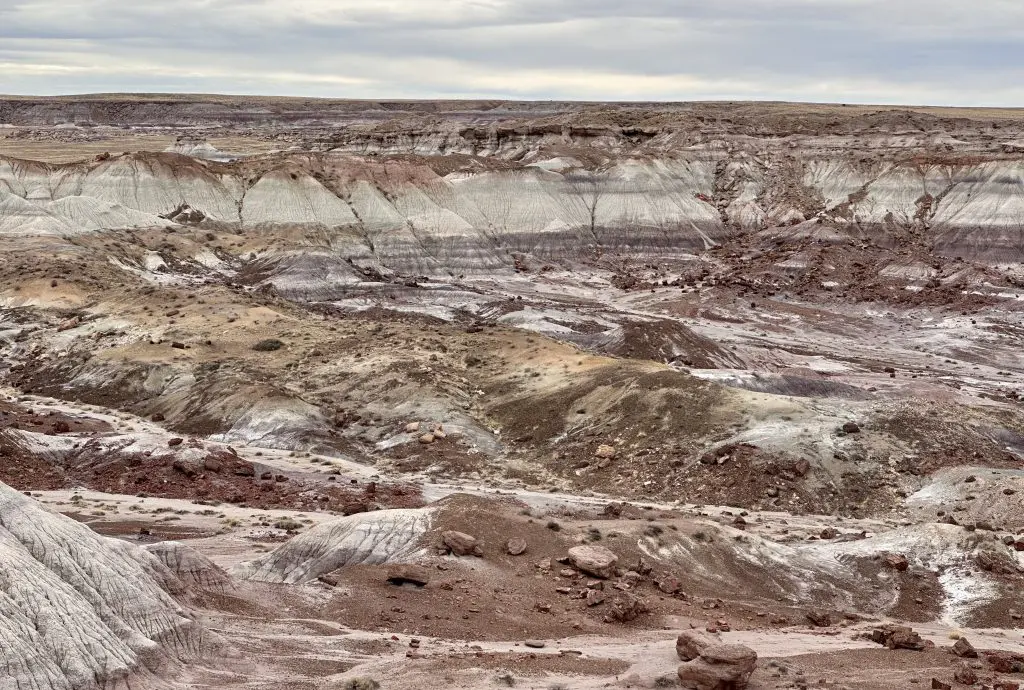
Jasper Forest has a high concentration of petrified wood, although there used to be more before the federal government made it illegal to remove logs. It is still a sight to see.
6. Visit the 217-million-year-old Agate Bridge
Next, stop at the Agate Bridge, a fossilized 110-foot log from about 217 million years ago. The log was carried to this place by a river, then buried in the river sediment preventing decay, according to a park sign. Volcanic ash dissolved in the groundwater which provided silica to cause the wood to crystallize into quartz, the posted information stated.
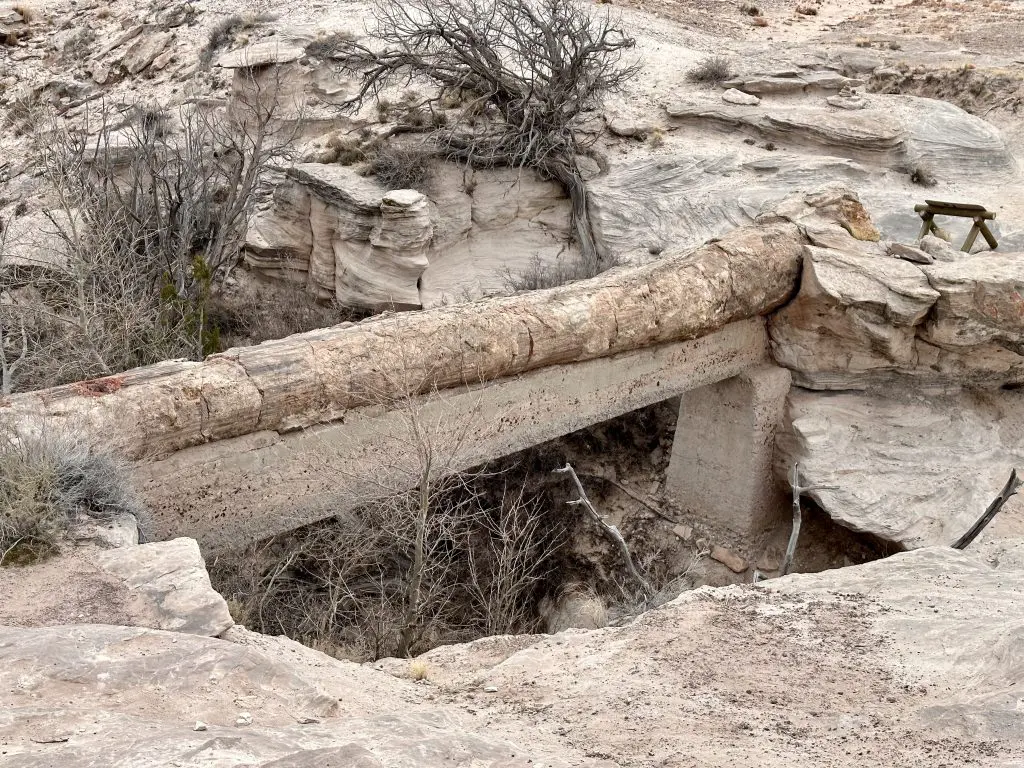
A concrete structure, built underneath the log bridge in 1917, adds support and preservation.
7. Hike through Blue Mesa
The Blue Mesa Trail meanders through colorful geological formations created around 220-225 million years ago. Geologic Formations – Petrified Forest National Park (U.S. National Park Service)
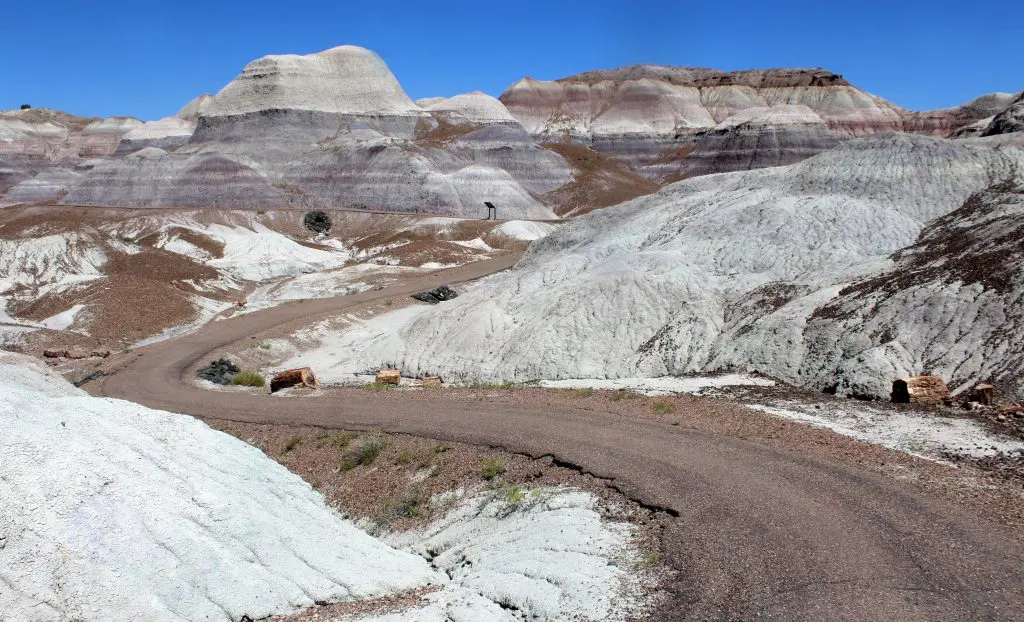
The 1-mile paved and gravel loop trail, which starts at the sun shelter, wanders through bluish bentonite clay and petrified wood. Trails – Petrified Forest National Park (U.S. National Park Service)
8. Take a picture of the Teepees
One of the best displays of colorful deposits are at the Teepees.
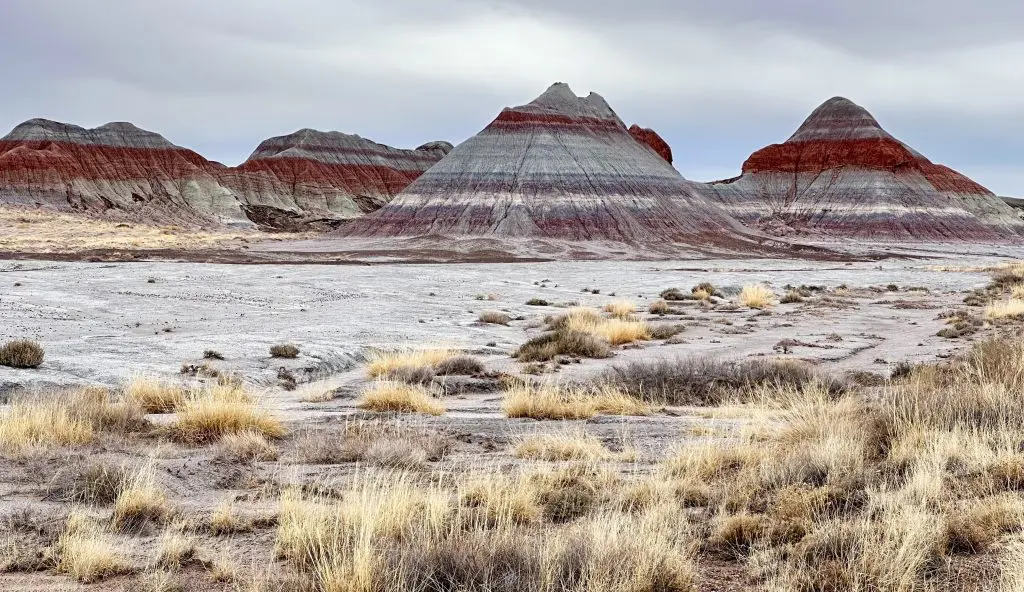
These mudstone and minor sandstone beds were formed around 220-225 million years ago. Geologic Formations – Petrified Forest National Park (U.S. National Park Service)
9. Try to decipher what is on Newspaper Rock
There are a couple of areas to view petroglyphs in the park, with Newspaper Rock being the most popular.
At Newspaper Rock, there are over 650 drawings spanning up to 2,000 years, according to the website. There are too many drawings, over too long of a period, to decipher, yet Modern American Indian groups have interpreted the some of the signs to represent family, spirituality, and calendar events. Newspaper Rock – Petrified Forest National Park (U.S. National Park Service)
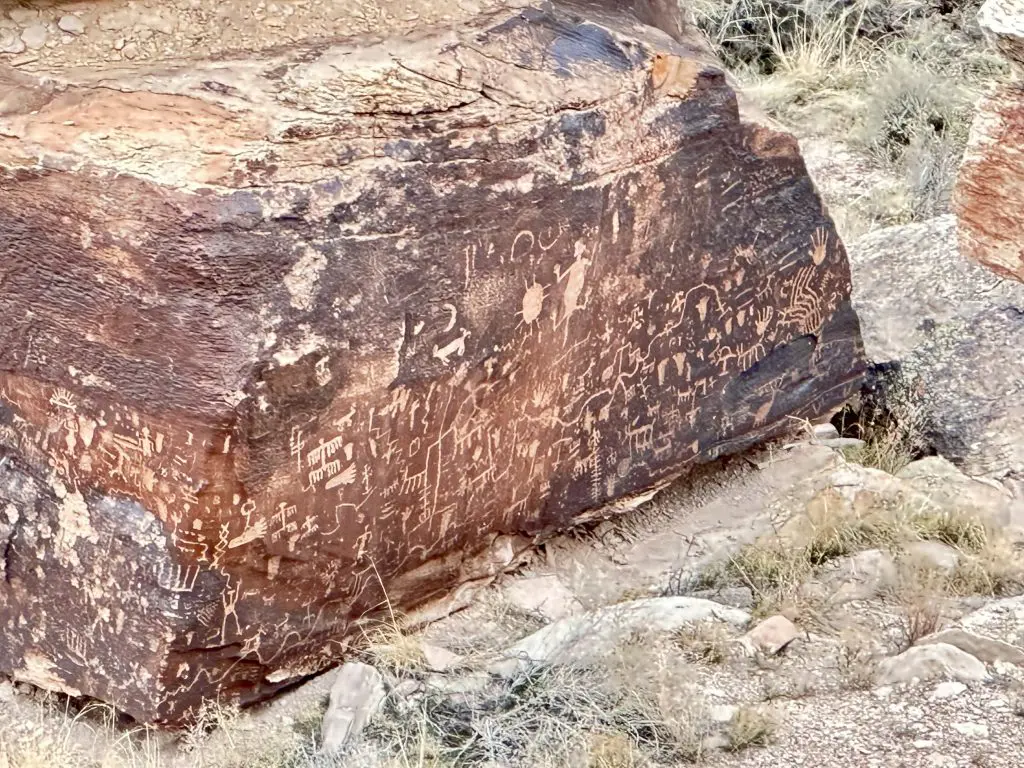
Make sure to bring a pair of binoculars or a zoom lens to get a better view of the petroglyphs, although you can see them with the naked eye.
10. Explore Puerco Pueblo Ruins at Petrified Forest
To explore the cultural heritage of ancestral dwellers inside Petrified Forest, visit the ruins of Puerco Pueblo. Here are the remains of a 100-plus room site occupied over 600 years ago. According to a park sign, the Puebloan home was inhabited around A.D. 1250-1380.
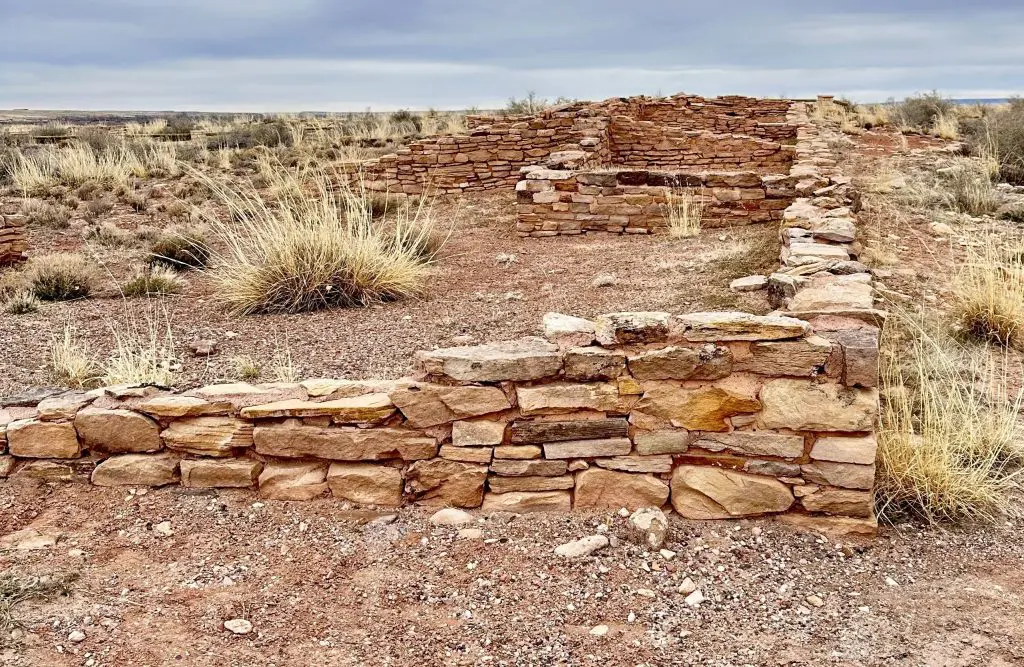
There are more petroglyphs and pictographs, depicting astronomical events among other things, on the south end of the Puerco Pueblo trail. Puerco Pueblo – Petrified Forest National Park (U.S. National Park Service)
11. Stop along Route 66
Petrified Forest is the only national park with a portion of Route 66 running through the park. Here a 1932 Studebaker marks where a portion of the Mother Road gave way to millions of travelers crossing the country, according to a park sign.
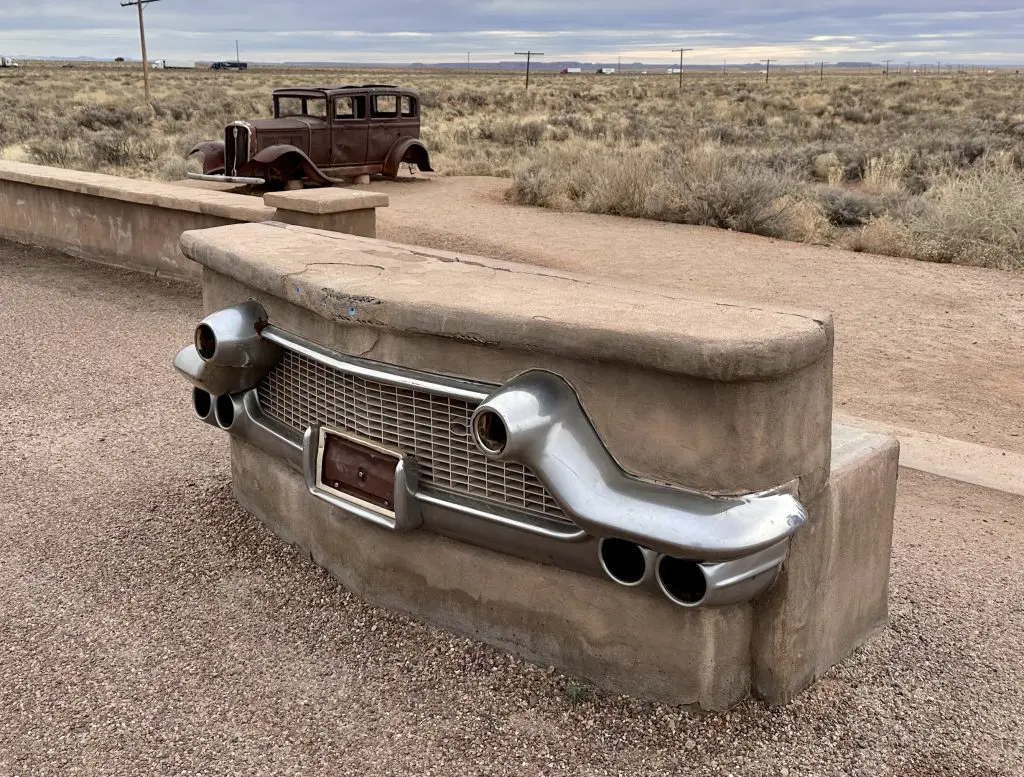
The trucks in the distant background are driving on U.S. Route 40, which is now the main highway through the park, although there is no exit at this point. You must enter at the north entrance station at Exit 311 along Route 40.
12. Enjoy beautiful vistas of the Painted Desert
Once you pass the Route 66 point of interest, there are several quick stops to see varying panoramic views of the Painted Desert.
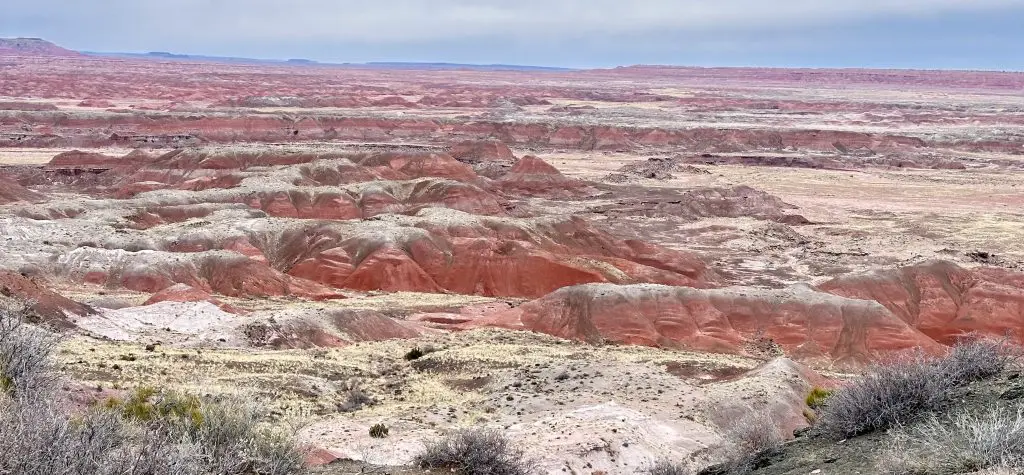
First you will come to Lacey Point, Whipple Point, and Nizhoni Point, then a little further north you’ll hit Pintado Point, Chinde Point, and Kachina Point.
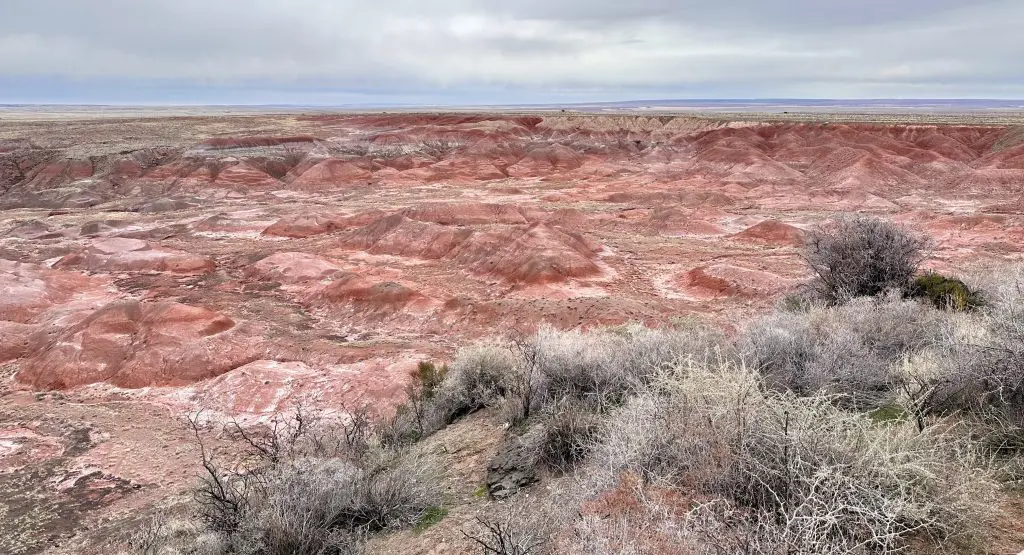
13. Grab ice cream at Painted Desert Inn
Quench your thirst or have some ice cream at the Painted Desert Inn National Historical Landmark. Even though there were changes to the original structure, the Painted Desert Inn always has been a place of rest and relaxation.
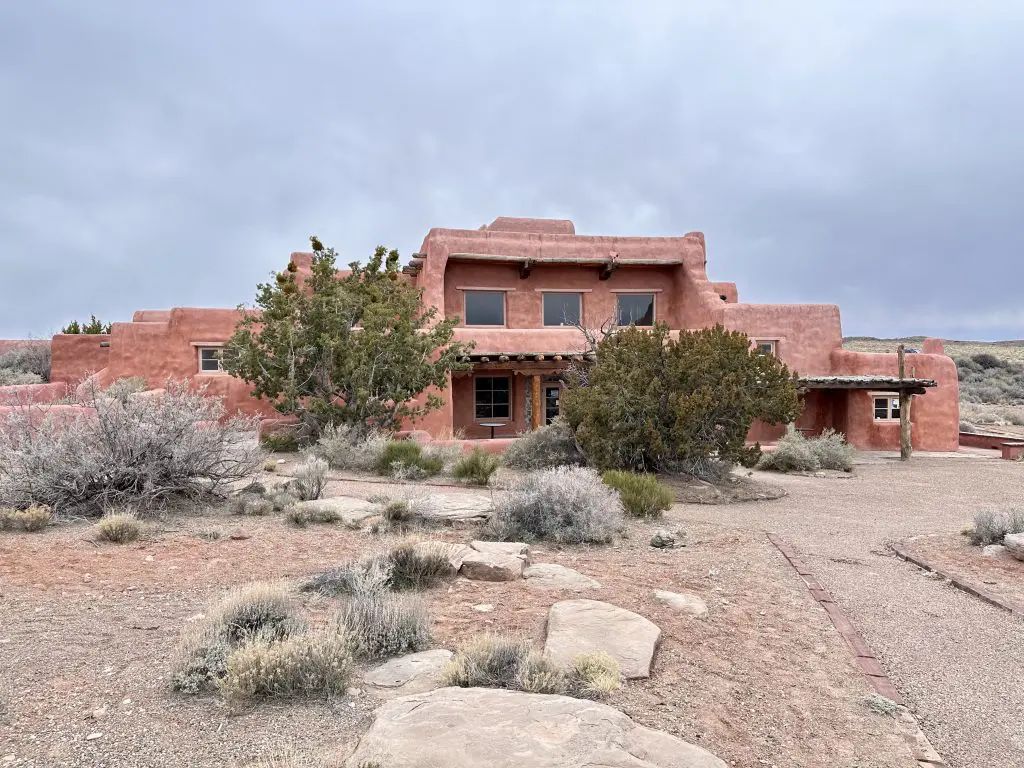
Originally known as the Stone Tree House, Herbert Lore built it in the early 1920s from petrified wood and native stone. Painted Desert Inn – Petrified Forest National Park (U.S. National Park Service) The building has gone through changes to its current state of a Pueblo Revival design.
14. Hike Painted Desert Rim Trail
You can see spectacular views along the one-mile Painted Desert Rim Trail from Kachina Point near Painted Desert Inn to Tawas Point.
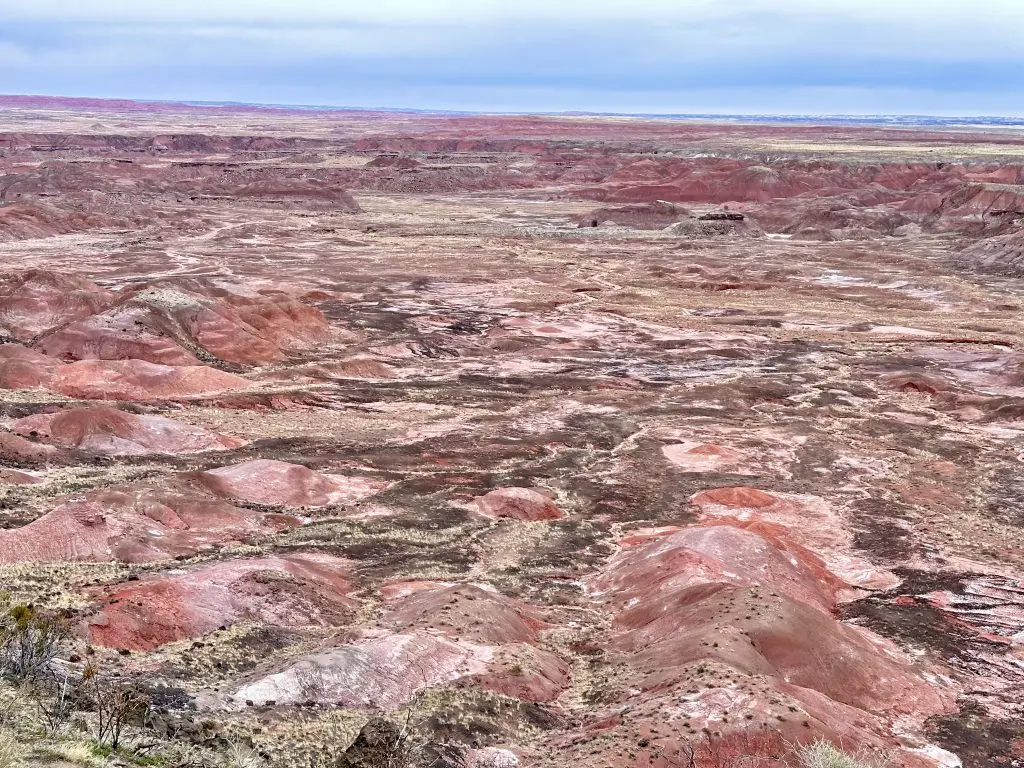
Spectacular views of red, pink, and orange mudstones mixed with thin layers of limestone area seen in the northern area of the park. These are all parts of the Owl Rock Member of the Chinle Formation, from about 205 million years ago. Geologic Formations – Petrified Forest National Park (U.S. National Park Service)
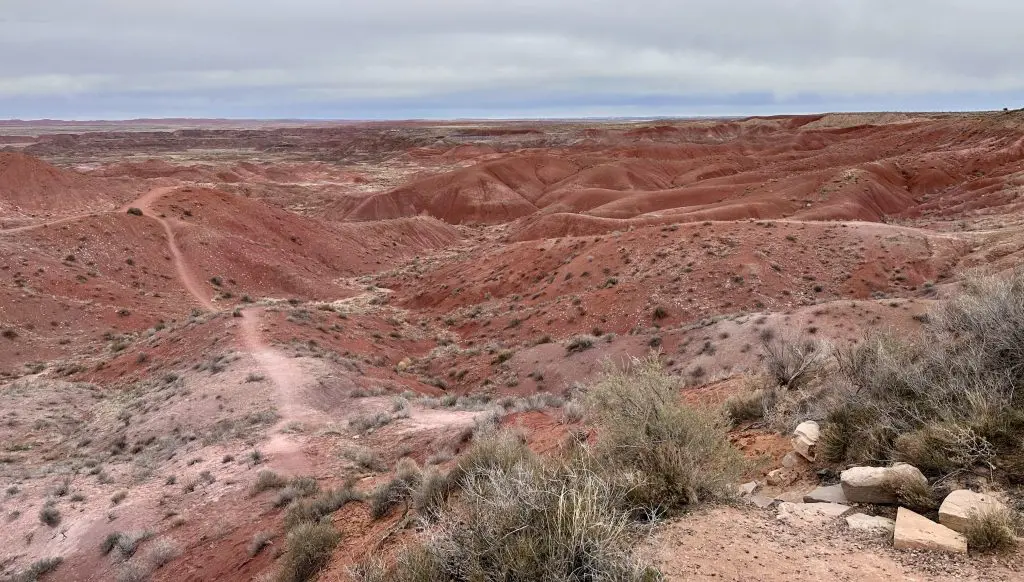
The reddish-pinkish-orangish hue is from iron oxidizing when the ancient soils formed in this northern area of the park. Geologic Formations – Petrified Forest National Park (U.S. National Park Service)
15. Buy a rock at Painted Desert Visitor Center
Painted Desert Visitor Center is the last point on the north end before heading out on Interstate 40. There is a nice gift shop where you can explore and purchase a piece of petrified rock, which did not come from inside Petrified Forest but outside the park. Remember, we want to leave nature as is for the next visitors.
In addition, there is a gas station and a diner, and one last time to learn about petrified wood before leaving the park.
Wildlife in the park
Wildlife in the park includes:
- Coyotes, bobcats, mule deer, pronghorn, porcupines, rodents including prairie dogs, a variety of bats, and other mammals. Mammals – Petrified Forest National Park (U.S. National Park Service).
- Insects, butterflies, spiders, including tarantulas. Insects, Spiders, Centipedes, Millipedes – Petrified Forest National Park (U.S. National Park Service)
- 258 species of birds, including sparrows, wrens, bald eagles, greater roadrunners, and owls. Birds – Petrified Forest National Park (U.S. National Park Service)
- Amphibians and reptiles. Animals – Petrified Forest National Park (U.S. National Park Service)
- Birds, lizards, and rabbits are what’s the most frequently seen. Animals – Petrified Forest National Park (U.S. National Park Service)
Lodging and Food
Both visitor centers have grab and go food. The Painted Desert Visitor Center and the Painted Desert Inn have more food varieties.
There are no campgrounds or lodgings in the park. But if you want to explore the Petrified Forest Wilderness Area, overnight backpacking permits are available. Backpacking – Petrified Forest National Park (U.S. National Park Service)
Holbrook, Ariz., west of the park on U.S. 40, is the closest town. It is quaint, one of the stops along Route 66, still living up to the days of the Mother Road and was part of the Pony Express.
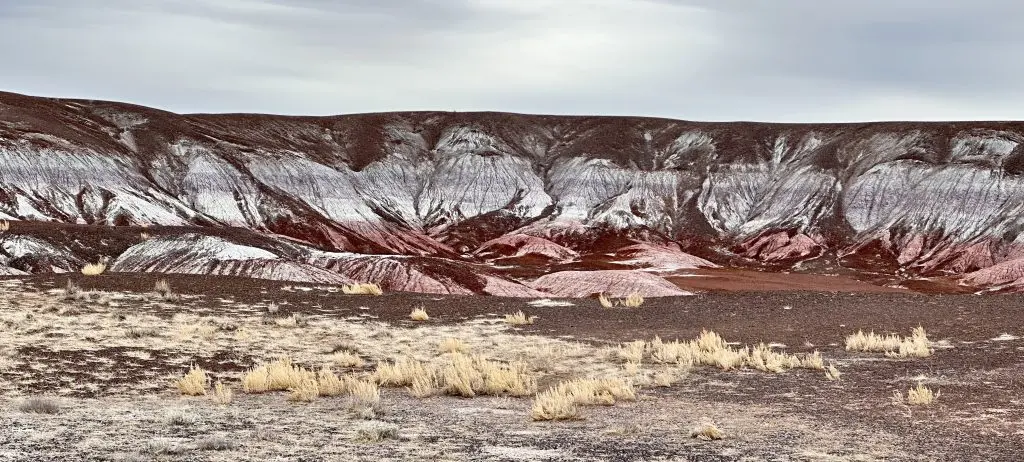
Know before you go:
- Taking petrified wood, fossils, and cultural items are prohibited. Since the park only accounts for 20 percent of the petrified wood in northwest Arizona, there are other options outside of the park to purchase a treasure to take home. Frequently Asked Questions – Petrified Forest National Park (U.S. National Park Service)
- American the Beautiful National Park Pass, or day pass, is required for entry.
- The park is open 8 a.m. to 5 p.m. daily, except Christmas and Thanksgiving.
- Pets are allowed on a leash except in buildings.
- Check weather, it is hot in the summer and thunderstorms pop up.
Basic Information – Petrified Forest National Park (U.S. National Park Service)
For more information, visit the park’s website at www.nps.gov/pefo
Looking for helpful apps to plan your next trip? Check out this resource Looking for Helpful Travel Apps? – Travel Like A Tourist.
